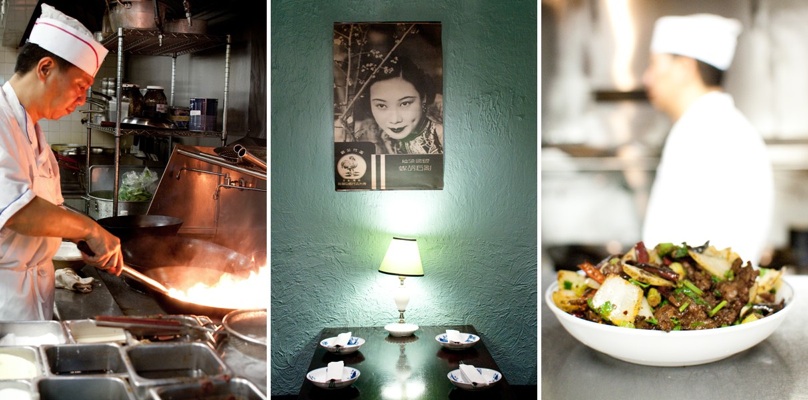Cafe China, Café China, New York, NY, Szechuan, Sichuan, Authentic, Manhattan, Best Chinese in NYC, Murray Hill, Midtown East, Where to eat in New York, Chef’s Recs, Chefs Feed, Where Chefs Eat, Where to buy Chinese ingredients, Flushing, Chinese Restaurants, Where Chinese Chefs Eat, Queens, Manhattan, NYC
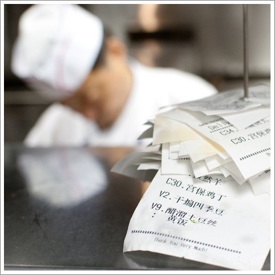
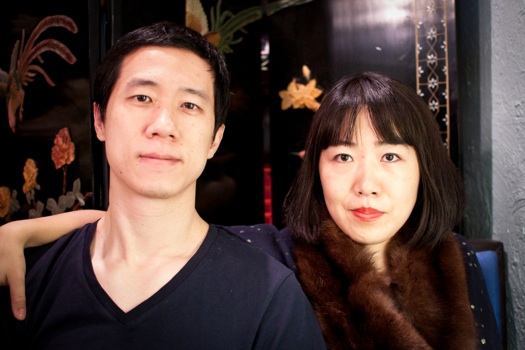
Café China Owners Xian Zhang and Yiming Wang
Photo Credit: Find. Eat. Drink.
Café China | The food
The food is very authentic using mostly classic recipes, but we are trying to bring a good balance. We want to strike a point where we stay authentic and traditional, but also make the food healthy.
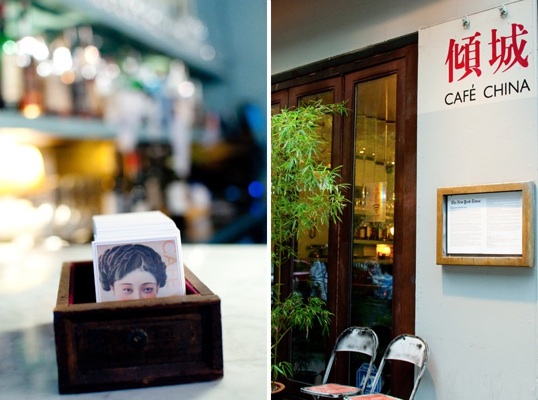
The bar and the restaurant
Photo Credit: Find. Eat. Drink.
The Vision
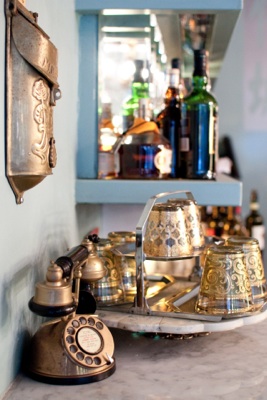
Authentic Sichuan
We follow classic Sichuan recipes and also traditional Chinese cooking, which have similar techniques in common. The way we cook the dishes, the ingredients and the spices -- everything matters. Even how many times you flip the wok counts.
The American-Chinese chefs who cook using Americanized Chinese techniques do things very differently. They are using too many modern instruments: ovens, microwaves and fryers. They also skip certain details when they cook. I think modern Americanized-Chinese food is about the process, it’s a speeding process. They are trying to bring out the efficiency, and also achieve strong flavors, but in the meantime take shortcuts for certain steps.
Traditional tools are the wok and steamers. We mostly use very simple, traditional equipment.
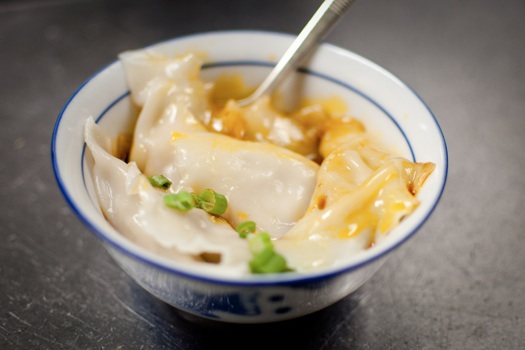
Pork Dumpling with Chili Oil
Photo Credit: Find. Eat. Drink.
The Region
I consider that region food-wise, the most representative of Chinese food. Our chefs are from there. Sichuan, geographically, is right in the middle of the Chang Jiang River. So, location-wise, it’s in a very good place. It has a very good quality soil, quality water and thousands of years of history.
To give you a little bit history, the Huang River is a disastrous river because it tends to over-flood and the soil around the river is not very good for the field. But at the other end, the Chang Jiang River is very peaceful and nurturing.
Classic Sichuan Spices
The most important spice for Sichuan cooking is the chili pepper, like the dried chili peppers we cut up. They are cut up to bring out more flavor from the pepper. You don’t need to eat them when they are in a dish because the flavor is already out. They are not too spicy. They have a very special aroma when you cut into them and then add them in the oil. We want to capture that aroma.
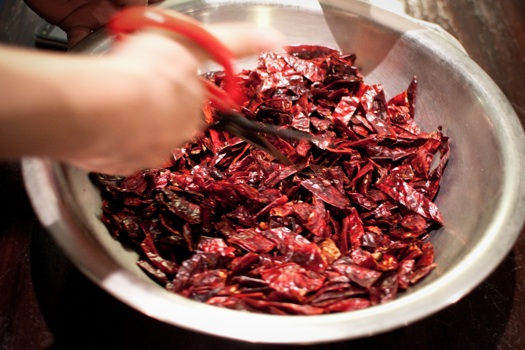
Chopped chili peppers
Photo Credit: Find. Eat. Drink.
The Sichuan peppercorn is another important spice. That is where the ma flavor is coming from. Ma means numbing, the numbing taste.
We have an entire dry room for our spices. We have so many herbs that we use for different dishes.
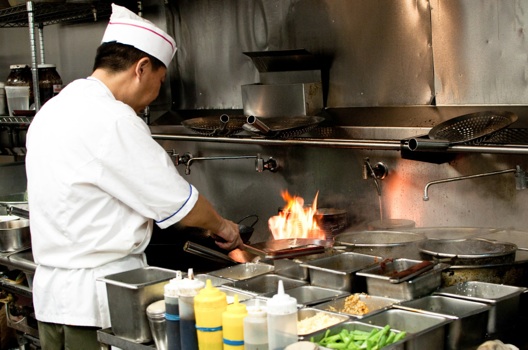
Chef Lu Ziqiang
Photo Credit: Find. Eat. Drink.
Rice in Chinese Food
The biggest difference between eating Chinese food in America versus China is that here, rice is only considered a side dish. In China, rice is the main course and the other dishes are the sides. So in China, all of the food is designed with rice in mind, which is why some dishes at Chinese restaurants are off-the-scale spicy. You are supposed to be eating them with rice, which tempers the spiciness.
Café China’s Rice
We actually went through a couple of iterations looking for the right rice. The one that we have right now is a mix. It’s about one fifth Dasanyuan and four fifths Jasmine rice. With the Dasanyuan, we have a rice that’s a little sticky, but not too sticky and with some texture. We also want some fragrance, which the Jasmine rice adds. When cooking the rice, we add a little vegetable oil to give it some polish.
The Wine List | Sherry
We like a European element. Design-wise, Shanghai from the 1930s was very influenced by Europe. If you go to Shanghai, you still see lots of Western influence, like Spanish and French architecture. The influence also comes from the food and the wine.
Sherry is very unique and tastes and feels like what we have in China, which is what we call a yellow wine. The savory taste of sherry is a little bit similar. The yellow wine is sorghum, but it is wine. Most people here won’t drink it, since it is really an acquired taste. The Chinese drink it up, but no one outside of China would drink it.
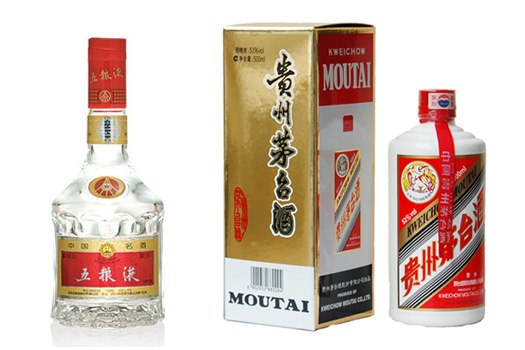
Chinese Liquor
A lot of people drink Wuliangye. It’s like Moutai, but it’s a second tier Chinese liquor and very traditional. It’s a clear liquor that is kind of a cross between vodka and gin. It’s sorghum-based and very fragrant and flowery. It’s basically drunk as shots.
Maotai is also very good, but it’s become overpriced.
You want it to be fragrant because you drink it before dinner, like an aperitif, to celebrate the meal... basically bottoms up!
Eat & Shop Chinese Food

Find | Shops & Markets
When you go shopping for Chinese food I think a good rule of thumb is to go to a very crowded market, because the more crowded it is the more chance they have fresher food. Chinese food is all about eating fresh.
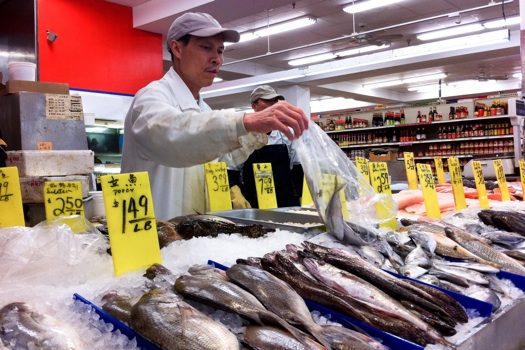
Fresh Fish at Hong Kong Supermarket
Photo Credit: Find. Eat. Drink.
Hong Kong Supermarket
We love the variety and the fresh food sections at this large Chinatown market, especially the seafood and fresh vegetables.
157 Hester Street, New York, NY 10013
T: 1.212.966.4943 | www.hongkongsupermarket.com
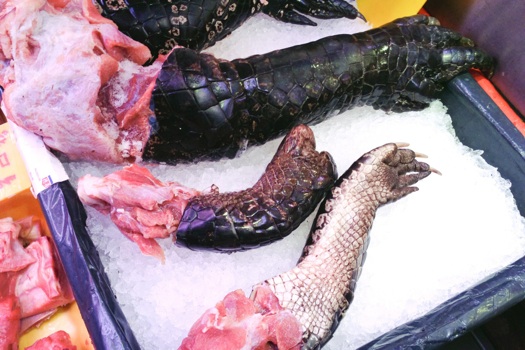
Alligator Meat at Deluxe Food Market
Photo Credit: Find. Eat. Drink.
Deluxe Food Market
It’s in Chinatown and it’s a giant market. The seafood section has a wonderful variety. They have dozens of different types of dumpling wrappers and noodles.
79 Elizabeth Street, New York, NY 10013
T: 1.212.925.5766
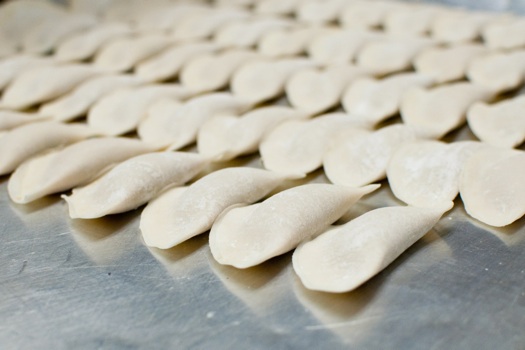
Café China’s Dumplings
Photo Credit: Find. Eat. Drink.
JMart - New World Shopping Center
It’s a supermarket where you can get fresh meat, fish and vegetables. Our chef normally goes here to get dumplings.
136-20 Roosvelt Avenue, Flushing, NY 11354
T: 1.718.353.0551 | www.newworldmallny.com/en/jmart
Find | Bakeries
Taipan Bakery
It’s a very good Chinese bakery and I really like their Napoleons, which are different from the western Napoleons. The western ones are more creamy, whereas the Chinese Napoleons are light, dry and crispy with a nuttier walnut flavor. The texture is also very airy and soft. They are a great match with Vietnamese coffee or tea.
194 Canal Street, New York, NY 10013
T: 1.212.732.2222 | www.taipanbakeryonline.com
Eat | Restaurants
The same holds for Chinese restaurants as markets. If it is a very quiet Chinese restaurant, get out! They might sell you dumplings that are two days old.
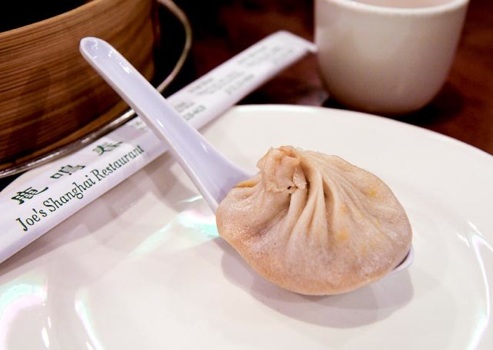
Soup Dumplings at Joe’s Shanghai
Photo Credit: Alexis Lamster [Flickr]
Joe’s Shanghai
Go here for the soup dumplings. The other stuff is not very good. Your soup dumpling shouldn’t be broken, it should be soupy, because that’s why we call it a soup dumpling. The broth is supposed to be very hot and it should be a little bit sweet. To get that right is very difficult. I’ve been to a lot of Chinese restaurants where the soup dumpling is broken or the skin is too thick or the soup is just non-existent.
9 Pell Street, New York, NY 10013
T: 1.212.233.8888 | www.joeshanghairestaurants.com
The Grand Sichuan
We do lots of take out because I don’t normally enjoy the space when I eat in a Chinese restaurant. I love appetizers and I especially love the cold noodles here. The baby black lamb is good., it has red and green pepper with the lamb and they use a unique sauce. It’s fermented bean curd, which is a very traditional Chinese sauce.
19-23 St Marks Place, New York, NY 10003
T: 1.212.529.4800 | www.thegrandsichuan.com
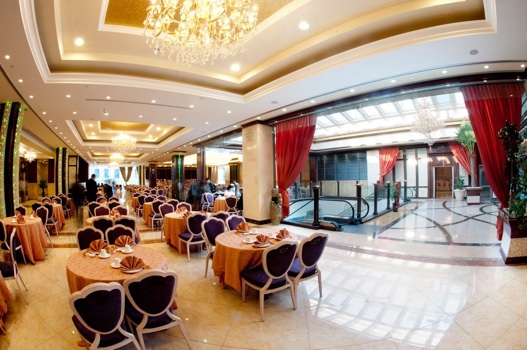
Grand Restaurant Above JMart
Photograph courtesy of Grand Restaurant
Grand Restaurant above JMart New World Shopping Center
When Chinese people talk about a tea house that means a restaurant with dim sum. They have many different varieties of dim sum like chicken feet, different type of balls and dumplings.
136-20 Roosevelt Avenue, New York, NY 11354
T: 1.718.353.0551 | www.newworldmallny.com/en/grand-resturant
Wu Liang Ye
It’s a very famous Sichuan restaurant in Midtown, very close to Rockefeller Center.
36 West 48th Street, New York, NY 10036
T: 1.212.398.2308 | wuliangyenyc.com
Golden Shopping Mall Food Court
Many small stalls in the basement selling really good handmade noodles. The noodles here have great texture.
41-28 Main Street, Flushing, NY 11355
More Chinese Recs

Download the F.E.D. iPhone app and get more Chinese restaurant and shop recommendations from other chefs, sommeliers and bartenders.

The decor is cool -- mint green walls with vintage posters of Shanghai stars from the 1930s, siren red diner chairs, antique tea pots, radios and cameras. But the food? Let’s just say that is unapologetically hot and spicy. Chef Lu Ziqiang comes from the provence of Sichuan and is no stranger to their floral peppercorns. He cooks authentic cuisine that recently received two stars by the New York Times.
We sat down with chef Ziqiang and owners Xian Zhang and his wife, Yiming Wang, to talk about the food, their design and their choice of putting sherry on their wine list. All three are Chinese-born and pass along their favorite Chinese markets and restaurants in New York.
Sichuan Meets Design at Café China
June 25, 2013
Midtown East / Murray Hill - New York, NY

General Information

Café China
Midtown East / Murray Hill
Shanghainese / Sichuan
13 East 37th Street
New York, NY 10016
T: 1.212.213.2810
Website
Share




Share

Photo Credit: Find. Eat. Drink.
Tweets

